Highlights
The research of the APS is focused on three main topics:
- Materials such as semiconductors and insulators,
- Methods to advance characterization using advanced electrical, optical, and particle-based probes, and
- Modeling, from first principles to advanced simulations of reliability topics in systems.
Our overall goal is the improvement in understanding and design of materials used in power electronics, sensing, and communication.
Woerle et al 2020 - Muon Interaction with Negative-U and High-Spin-State Defects: Differentiating Between C and Si Vacancies in 4H-SiC

We have discovered that muon spin rotation experiments, along with hybrid density functional calculations, can identify potential qubit candidates in SiC. The response of the muons to the silicon and carbon vacancies is distinct and we propose, that the technique is sensitive to the specific relaxation mechanisms inside the semiconductor. external page Link to the publication
Tsibizov et al 2020 - Accurate Temperature Estimation of SiC Power MOSFETs Under Extreme Operating Conditions
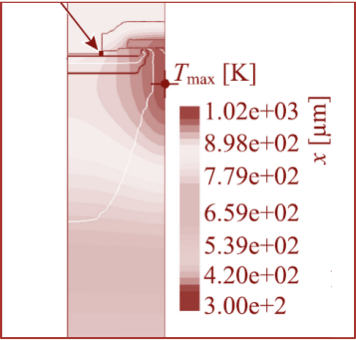
The electro-thermal simulation of a 1.2 kV SiC power MOSFET operating at high temperatures is discussed using a calibrated TCAD model. A 1D RC thermal network is proposed allowing the accurate temperature estimation of the device during short-circuit events. external page Link to the publication
Müting et al 2020 - Lateral straggling of implanted aluminum in 4H-SiC
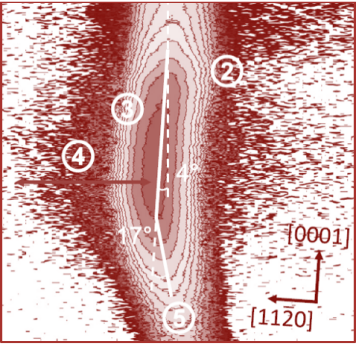
Lateral straggling of aluminum in 4H-SiC is studied with two-dimensional SIMS profiles acquired by a novel technique. A lateral spread of several micrometers and a clear dependence on the crystallographic orientation is shown. external page Link to the publication
Wörle et al 2019 - Interaction of low-energy muons with defect profiles in proton-irradiated Si and 4H-SiC

Muon spin rotation spectroscopy is presented as a non-destructive technique for the depth-resolved analysis of defects in semiconductor materials. Irradiation induced defects in Si and 4H-SiC are successfully detected by this technique showing its great potential. external page Link to the publication
Wörle et al 2019 - Two-dimensional defect mapping of the SiO2 4H-SiC interface
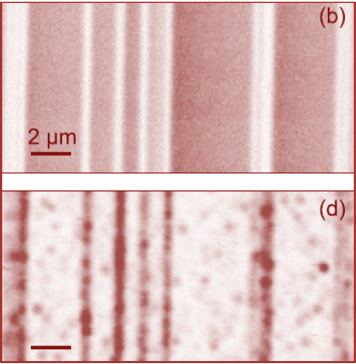
4H-SiC surfaces are fabricated with atomically flat and stepped regions. By combining highly sensitive analysis techniques, a direct relation between surface roughness and interface defect states is revealed. external page Link to the publication
Ziemann et al 2019 - Time-Resolved Short Circuit Failure Analysis of SiC MOSFETs

The development of short circuit failures in SiC power MOSFETs is investigated by high-speed optical imaging and fast electrical measurements. Special samples manufactured without encapsulation enable the observation of aluminum metal melting during destructive failures. external page Link to the publication
Nida, Grossner 2019 - High-Temperature Impact-Ionization Model for 4H-SiC
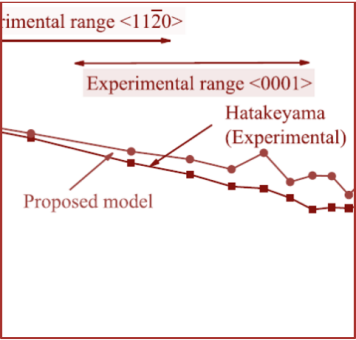
Under avalanche conditions, 4H-SiC based devices can reach temperatures above 1500 K. A highly accurate model based on the underlying physics is proposed to improve device simulations under such extreme conditions. external page Link to the publication
Kovačević-Badstübner et al 2018 - A More Accurate Electromagnetic Modeling of WBG Power Modules
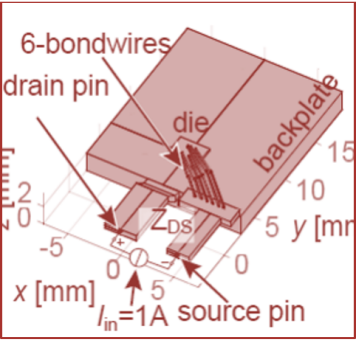
Electromagnetic modelling enables the prediction of parasitic inductances, capacitances, and resistances of current paths in power semiconductor packages. Two modelling approaches, one using ANSYS Q3D Extractor and one using a self-developed PEEC-based solver, are presented. external page Link to the publication